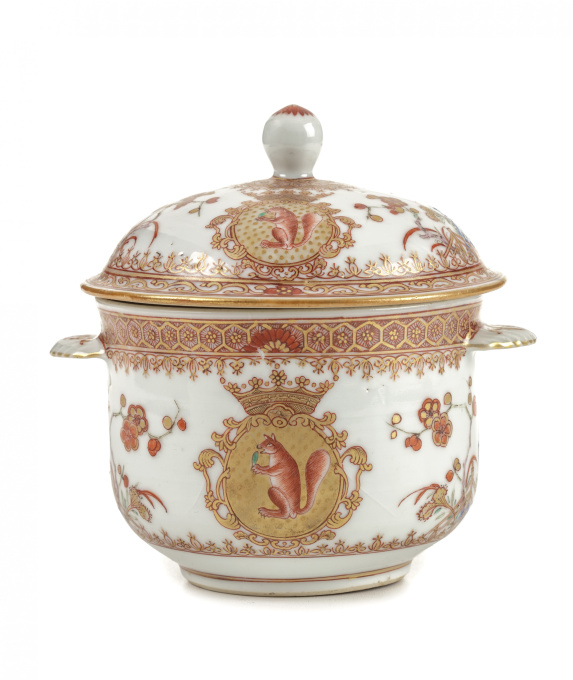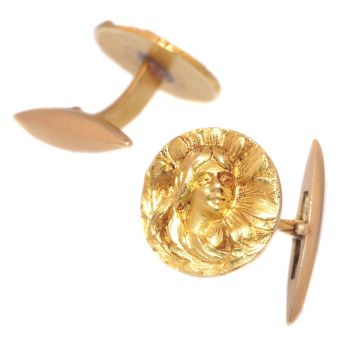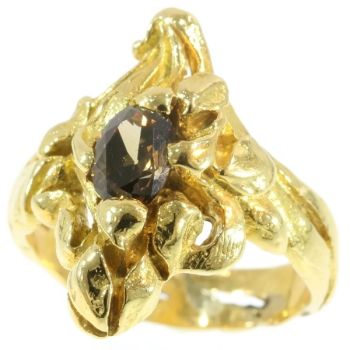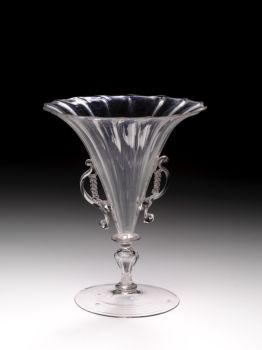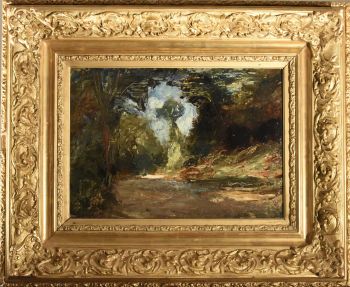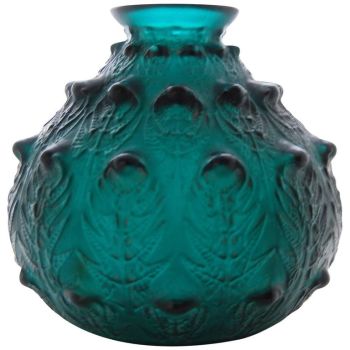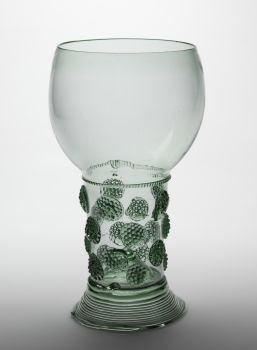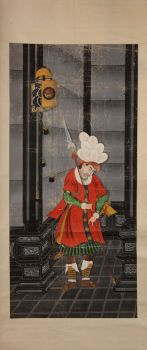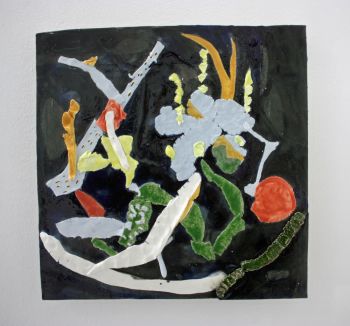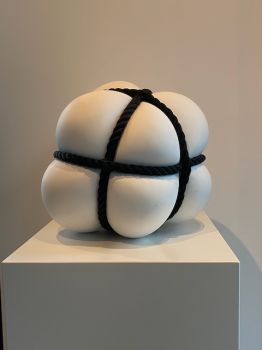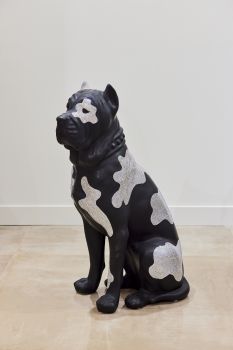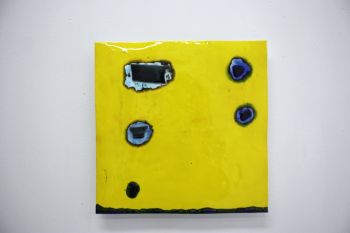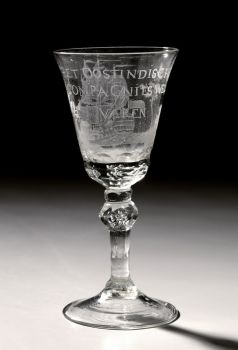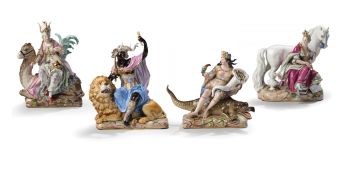BOL À SUCRE ET COUVERCLE EN PORCELAINE D'EXPORTATION CHINOISE `` SICHTERMAN '', KANDIJPOT 1730 - 1735
Artiste Inconnu
PorcelainePorcelaine chinoise
13 ⨯ 11 cm
Actuellement indisponible via Gallerease
Zebregs & Röell - Fine Art - Antiques
- Sur l'oeuvre d'artA CHINESE EXPORT PORCELAIN 'SICHTERMAN' SUGAR BOWL AND COVER, KANDIJPOT
Yongzheng period, circa 1730-1735
Both the bowl and the lid decorated in iron-red, blue, yellow and green enamels and gold, showing a squirrel in profile eating a nut, surrounded by bamboo and floral sprays, the bowl restored.
W. 13.7 x H. 11 cm
Note:
The shape of this Chine de commande bowl and cover copies a European model sugar bowl and belonged probably to one of the first of altogether eight services ordered by Jan Albert Sichterman (1692-1764), and sent to the Netherlands from about 1730 onwards on board Dutch East Indiamen, but also on Swedish, English and Ostend ships.
Jan Albert Sichterman was the richest man of Groningen after his return in 1744 from the East Indies and was called “de Koning van Groningen”.
After a duel for which Jan Albert, as a soldier, would probably have been convicted in a court-martial, he had to escape the country and in 1716 sailed for the East Indies. There he had a brilliant career in the Dutch factories on the Ganges river in Bengal. First in Houghly from 1717 till 1723, then as head of the factory in Cassimbasar from 1725 till 1734 and finally as Director of Bengal in Houghly till 1744. In 1721 he had married Sibylla Volkera Sadelijn (1699-1781) in Houghly, daughter of Jacob Sadelijn who was Jan Albert’s predecessor as Director of Bengal, and Anna Françoise Pelgrom, daughter of Jacob Pelgrom (see item 39), Director of Bengal from 1701 till 1705. Jan Albert set up a silk and cotton weaving mill and had a significant impact on the trade of cotton and silk fabrics to the Netherlands. However, his fortune he made in private (illegal) trade and smuggling.
After his death in 1764, most of his belongings were auctioned including a total of over 4000 pieces of porcelain, including probably about 400 pieces of armorial porcelain.
- Sur l'artiste
Il peut arriver qu'un artiste ou un créateur soit inconnu.
Certaines œuvres ne doivent pas être déterminées par qui elles sont faites ou elles sont faites par (un groupe d') artisans. Les exemples sont des statues de l'Antiquité, des meubles, des miroirs ou des signatures qui ne sont pas claires ou lisibles, mais aussi certaines œuvres ne sont pas signées du tout.
Vous pouvez également trouver la description suivante :
•"Attribué à …." A leur avis probablement une oeuvre de l'artiste, au moins en partie
•« Atelier de …. ou « Atelier de » À leur avis, une œuvre exécutée dans l'atelier ou l'atelier de l'artiste, éventuellement sous sa direction
•« Cercle de… ». A leur avis une oeuvre de la période de l'artiste témoignant de son influence, étroitement associée à l'artiste mais pas forcément son élève
•« Style de … ». ou "Suiveur de ...." Selon eux, une œuvre exécutée dans le style de l'artiste mais pas nécessairement par un élève ; peut être contemporain ou presque contemporain
•« Manière de… ». A leur avis une oeuvre dans le style de l'artiste mais d'une date plus tardive
•"Après …." A leur avis une copie (quelle qu'en soit la date) d'une oeuvre de l'artiste
•« Signé… », « Daté… ». ou « Inscrit » À leur avis, l'œuvre a été signée/datée/inscrite par l'artiste. L'ajout d'un point d'interrogation indique un élément de doute
• "Avec signature ….", "Avec date ….", "Avec inscription …." ou "Porte signature/date/inscription" à leur avis la signature/date/inscription a été ajoutée par quelqu'un d'autre que l'artiste
Êtes-vous intéressé par l'achat de cette oeuvre?
Artwork details
Related artworks
- 1 - 4 / 12
Artiste Inconnu
Series of 6 Chinese cups and saucers (Yongzheng period)1722 - 1735
Prix sur demandeKuipers Kunst & Antiek
Artiste Inconnu
Series of 6 Chinese cups and saucers (Yongzheng period)1722 - 1735
Prix sur demandeKuipers Kunst & Antiek
1 - 4 / 12René Lalique
Un très rare vase «Fougères» vert foncé conçu par R. Lalique1912
€ 8.950Lennart Booij Fine Art and Rare Items
 Sélectionné par
Sélectionné parSilla Scheepens
1 - 4 / 24Artiste Inconnu
UN FILET D'IVOIRE D'UN DUTCHMAN TENANT UN COCKEREL18th century
Prix sur demandeZebregs & Röell - Fine Art - Antiques
Shiba Kokan
Peinture d'un hollandais fantastiqueearly 19th
Prix sur demandeZebregs & Röell - Fine Art - Antiques
Artiste Inconnu
The bell of the VOC fortress in Jaffna, Sri Lanka1747
Prix sur demandeZebregs & Röell - Fine Art - Antiques
 Sélectionné par
Sélectionné parDanny Bree
Artiste Inconnu
Néerlandais en miniature (Netsuke)1700 - 1900
Prix sur demandeZebregs & Röell - Fine Art - Antiques
Artiste Inconnu
UN PLAT EN ARGENT LOBBED INDONÉSIEN INSOLITElate 17th
Prix sur demandeZebregs & Röell - Fine Art - Antiques
Artiste Inconnu
UNE COLLECTION DE QUATRE BOÎTES À BIBLE EN IVOIRE SRI LANKAN18th century
Prix sur demandeZebregs & Röell - Fine Art - Antiques
Artiste Inconnu
A large Japanese Imari porcelain 'VOC Groningen' dish1800 - 1925
Prix sur demandeZebregs & Röell - Fine Art - Antiques
Artiste Inconnu
Deux portraits d'étude du Mas Marco Kartodikromo1900 - 1950
Prix sur demandeZebregs & Röell - Fine Art - Antiques
1 - 4 / 24Artiste Inconnu
Series of 6 Chinese cups and saucers (Yongzheng period)1722 - 1735
Prix sur demandeKuipers Kunst & Antiek
Samuel Dejong
Anatomia Blue Heritage, Hercules Open2017 - 2019
Prix sur demandeVilla del Arte Galleries
 Sélectionné par
Sélectionné parGallerease Magazine
1 - 4 / 24Artiste Inconnu
The bell of the VOC fortress in Jaffna, Sri Lanka1747
Prix sur demandeZebregs & Röell - Fine Art - Antiques
 Sélectionné par
Sélectionné parDanny Bree
1 - 4 / 12

